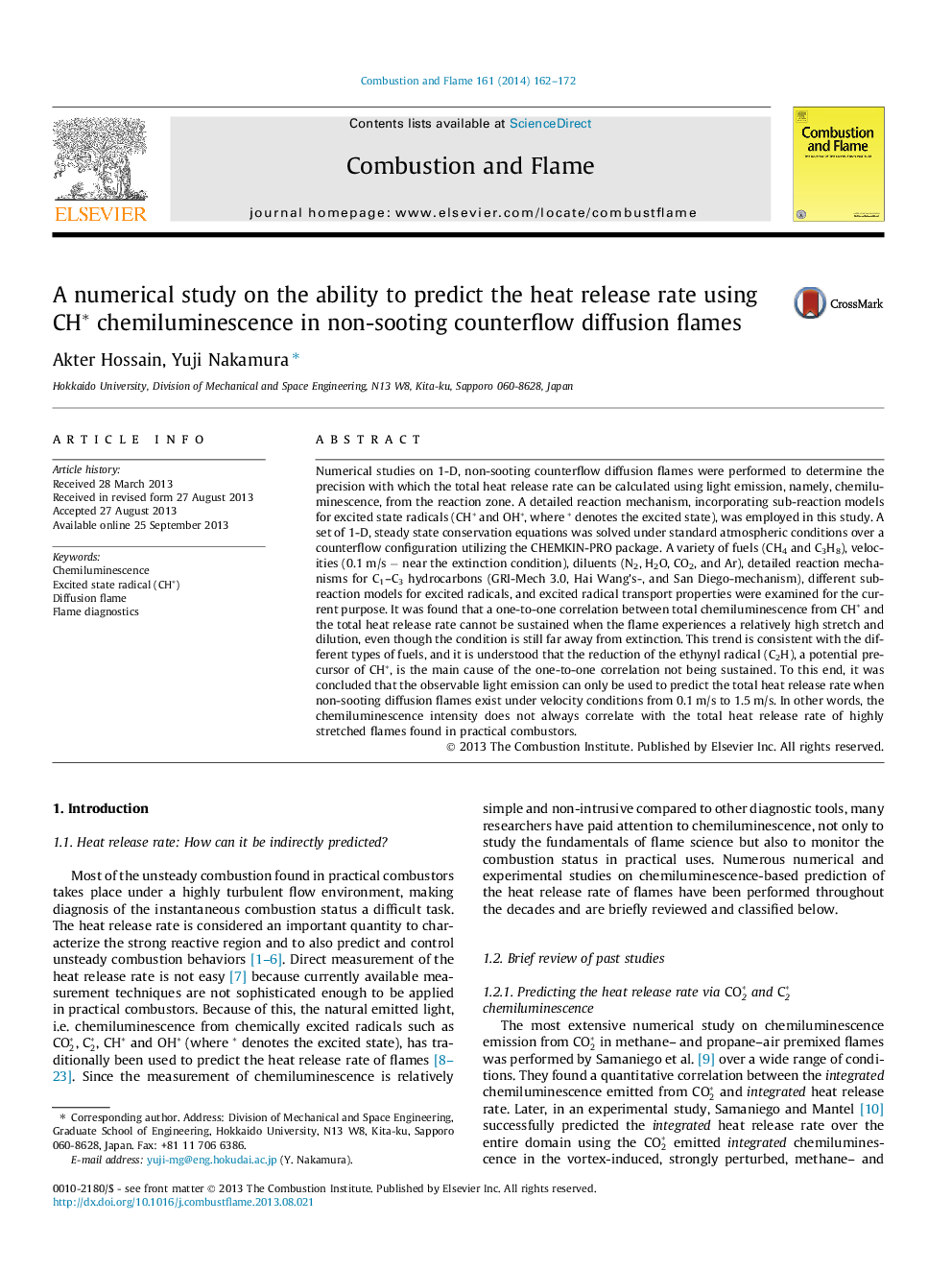| Article ID | Journal | Published Year | Pages | File Type |
|---|---|---|---|---|
| 168801 | Combustion and Flame | 2014 | 11 Pages |
Numerical studies on 1-D, non-sooting counterflow diffusion flames were performed to determine the precision with which the total heat release rate can be calculated using light emission, namely, chemiluminescence, from the reaction zone. A detailed reaction mechanism, incorporating sub-reaction models for excited state radicals (CH* and OH*, where * denotes the excited state), was employed in this study. A set of 1-D, steady state conservation equations was solved under standard atmospheric conditions over a counterflow configuration utilizing the CHEMKIN-PRO package. A variety of fuels (CH4 and C3H8), velocities (0.1 m/s − near the extinction condition), diluents (N2, H2O, CO2, and Ar), detailed reaction mechanisms for C1–C3 hydrocarbons (GRI-Mech 3.0, Hai Wang’s-, and San Diego-mechanism), different sub-reaction models for excited radicals, and excited radical transport properties were examined for the current purpose. It was found that a one-to-one correlation between total chemiluminescence from CH* and the total heat release rate cannot be sustained when the flame experiences a relatively high stretch and dilution, even though the condition is still far away from extinction. This trend is consistent with the different types of fuels, and it is understood that the reduction of the ethynyl radical (C2H), a potential precursor of CH*, is the main cause of the one-to-one correlation not being sustained. To this end, it was concluded that the observable light emission can only be used to predict the total heat release rate when non-sooting diffusion flames exist under velocity conditions from 0.1 m/s to 1.5 m/s. In other words, the chemiluminescence intensity does not always correlate with the total heat release rate of highly stretched flames found in practical combustors.
